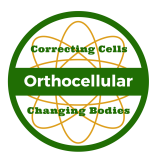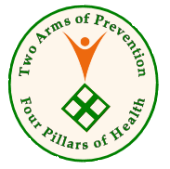Orthocellular Nutrition and Exercise Inc.
Motion is Life II: Stability and Mobility are First Up!
- squatting,
- lunging,
- pushing,
- pulling, and
- rotating.
- postural assessments,
- movement screens,
- flexibility tests, and
- balance and core checks.
- movement ability,
- joint flexibility, and
- balance issues.
- foot,
- knee,
- lumbar spine, and
- scapulothoracic region,
- ankle,
- hip,
- thoracic spine, and
- glenohumeral joints.
For Additional Information: Beyond Motion is Life II
A. You can also find more preventative health and fitness advice in the following e-book: Essential Health Tips
B. Or, if you feel you are ready for a Preventative Health Program, head over to either one of the following pages now to find out how to get started:
Permanent Weight Loss Program (if you are overweight)
Disease Prevention Program Stream 2 (if you are currently not overweight)
Checkpoint
Head back up to the top of the page: Motion is Life II
Go back to the past articles page: Past Articles
Return to the exercise articles page: Exercise Articles
Caring is sharing ....
Four Pillars
of
Health
Pillar #1
Nutrition Protocols
Visit the Nutritionist's Kitchen
Pillar #2
Exercise Routines
Go to the Exercise Room
Pillar #3
Stress Reduction
Techniques
Head over to the Stress Reduction Place
Pillar #4
Detoxification
Methods
Check out the Detox Centre
Preventative
Health Contract Services
Business
and
Industry
Educational
Institutions
Health
Agencies
Preventative
Health Business Opportunities
Four Pillar
Licences
Two Pillar
Licences
Image Galleries
Click one of the thumbnails below to view a series of photos taken on the Bruce Trail and Georgian Bay.
E-publications
Our E-books
Workshops
Free Workshops
Fall 2025
Go to: Free Workshops
Blog
The Preventative Way
with
Mr. Prevention
On The Preventative Way page we reveal a number of scientific facts related to how we function at the cellular level to keep our bodies healthy. Visit this page often as new facts, quotes, videos, tips, and traps will be added from time to time.
Go to: The Preventative Way
Connect with Us
on Facebook
Visit the American Council on Exercise
American Council on Exercise offers four certifications for aspiring fitness professionals including their Certified Personal Trainer (ACE-CPT) designation. Click on the ACE logo to find out all about their programs and certifications..
The Leap Manifesto
A call for a Canada based on caring for the Earth and one another is the message on this organization's site.
Click on the above logo to read the manifesto and then sign it. Orthocellular supports this initiative because it is about positive change for the people and the environment that we all share. The changes need to start now!









New! Comments
Have your say about what you just read! Leave me a comment in the box below.